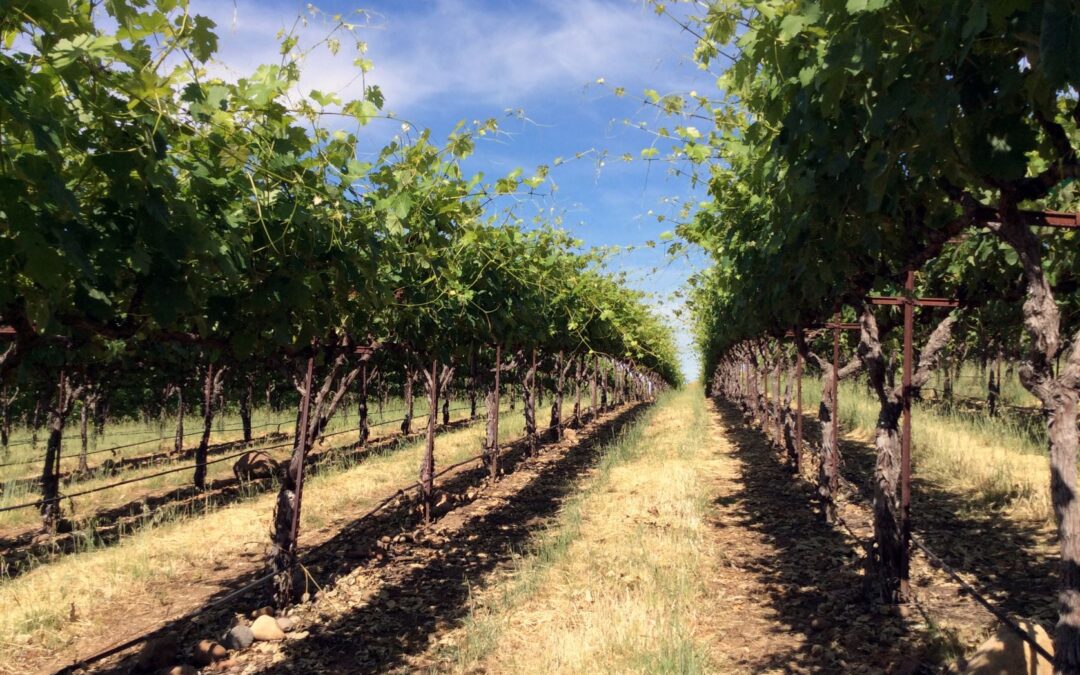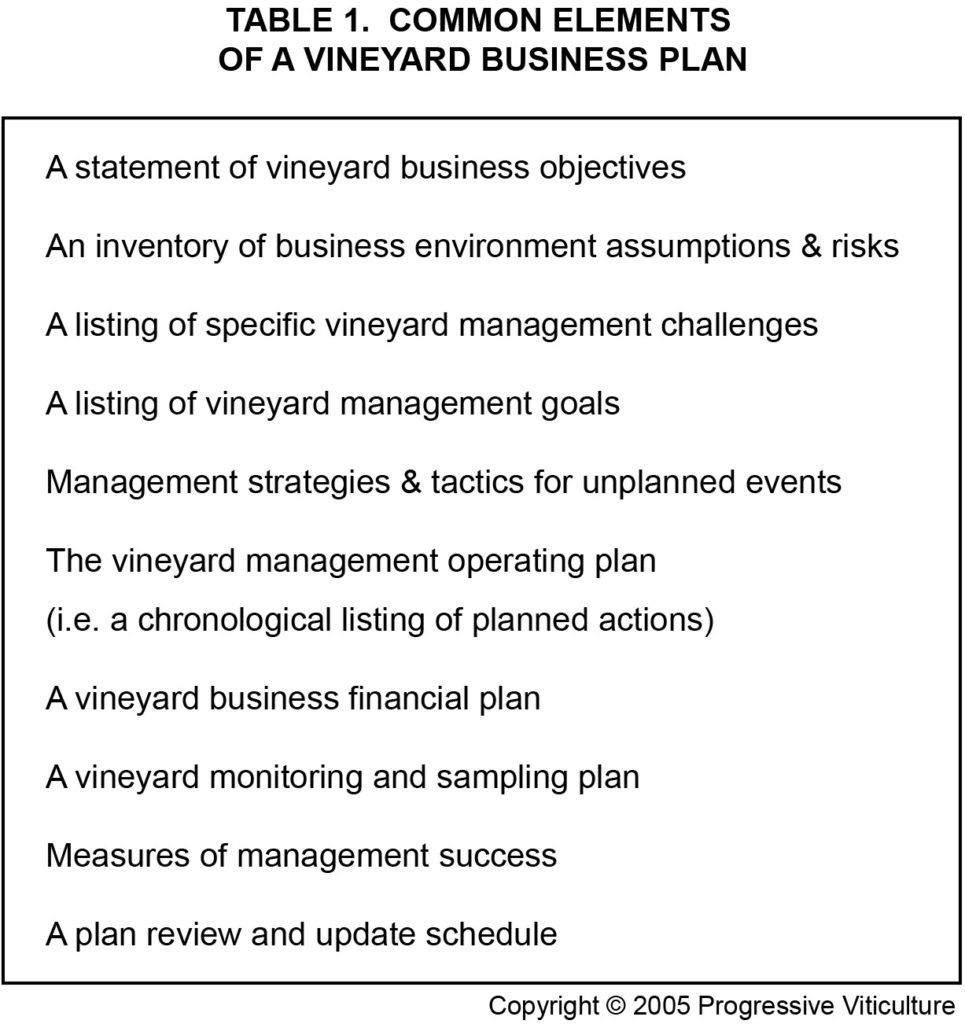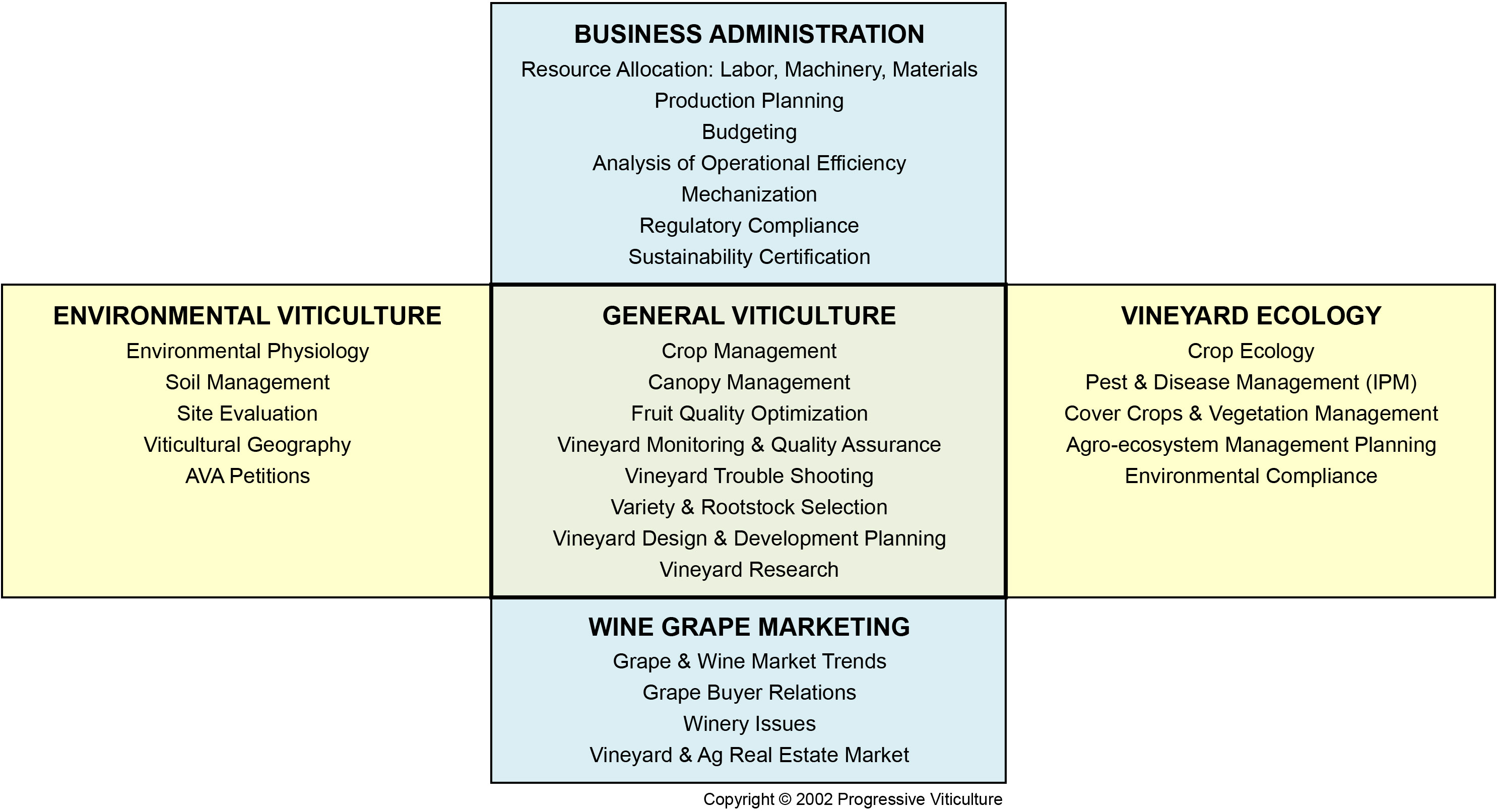JANUARY 14, 2019. BY STAN GRANT.
It’s a new year and, as we prepare for another growing season, it seems an appropriate time to take stock of our situation. After a period of sustained growth, wine sales in many categories have slowed, while winegrape production costs, especially those for labor and materials, have increased. At the same time, some wineries are becoming involved in specific vineyard management practices or expecting sustainable winegrape certification.
Given these conditions, how does a grape grower best prepare for the future? The best place to begin is with a business plan. Business plans state the business identity, its objectives for the future, and how it operates (Table 1).
The process of developing a plan builds consensus and unity within a business. In addition, it serves as a reference, like a road map, to help a business maintain the focus necessary for success. The plan may be simple, involving only a couple of pages of bullet points written over a cup of coffee, or comprehensive, involving detailed consideration of most aspects of the business.
The first part of a winegrape business plans states who you are and what you are about. It begins with some particulars of the company, such as type of business entity, company structure, and principle personnel. These are followed by the mission, vision, and values, which describe the nature of the business and its goals (Table 2). For example, the mission or business goal may be complete winery customer satisfaction or creating a certain profit. The mission is the engine that drives management. The vision may be the preeminence among winegrapes growers in your area. It is the ultimate goal of a winegrape business. The values that feed the mission and vision may include integrity and operating efficiency. Values are guidelines for business conduct. This first section of the plan may also include a list of business criteria that you feel are critical to your success, such as careful planning, an emphasis on quality, and diversification.
The second part of a vineyard business plan describes what is going on around you. It includes a winegrape market overview, such as the supply and demand situation, the financial condition of major grape buyers in your area, and grape pricing trends. It also includes a description of the environment for conducting business, such as interest rate trends, regulatory issues, and the availability and costs of needed supplies and services. This is also an appropriate place to outline assumptions about your business situation and risks, including your company’s strengths and weaknesses. These assumptions can help your determine where you need additional expertise from outside of the company (Figure 1).
Part three is a statement of what you intend to do or in other words, your strategies. A primary strategy may be sales efforts targeted at specific wineries. Another strategy may involve vineyard replanting to increase return on assets. A third may be the integrated use of practices and technologies for improved fruit yield, grape quality, and operating efficiency.
Part four is the operating plan, which describes how you plan to implement your strategies and realize your business objectives. It may describe important particulars of promotional efforts, vineyard replanting, and resource allocation, such as fertilization programs or the timing of certain practices to minimize risk of pest and disease problems.
The final section of a comprehensive business plan should be a financial plan, which includes an operating budget (i.e. projected expenditures), projected revenues, and financial assets and liabilities. If desired, it may involve more in depth analysis of the companies current financial position, including financial measures, measures of profitability, measures of size, and measures of economic efficiency. These can be used as benchmarks for evaluating future company performance.
The winegrape industry is dynamic and a winegrape business, to be successful, must continually and rapidly adjust to changing circumstances. For this reason, business plans must be periodically reviewed and revised to remain valuable.
A version of this article was originally published in the Mid Valley Agricultural Services January 2005 newsletter and was updated for this blog post.
Further Reading
Davidson, D. The business of vineyards. Davidson Viticultural Consulting Services, Glen Osmond, South Australia. 2001.
Davidson, D. Tightening your vineyard business. Australian and New Zealand Grapegrower and Winemaker. pp. 20-21. August 2002.
Grant, S. Fertilizer efficiency for wine grape vineyards. Practical Winery and Vineyard. March/April 2006. 28 (1): 35-41.
Grant, S. Vineyard self-evaluation. Lodi Winegrape Commission Coffee Shop Posting (lodigrowers.com). November 18, 2013.
Gran, S. Comprehensive vineyard water management. Lodi Winegrape Commission Coffee Shop Posting (lodigrowers.com). August 18, 2015.
Grant, S. On the nature of vineyards and vineyard management. Lodi Winegrape Commission Coffee Shop Posting (lodigrowers.com). March 06, 2016.
Grant, S. Managing vineyard mineral nutrient efficiency beyond the 4 R’s. Wines and Vines. April, 2016. pp. 77-78.
Grant, S. Vineyard business identity and marketing. Lodi Winegrape Commission Coffee Shop Posting (lodigrowers.com). October 19, 2017.
Grant, S. Managing mechanized equipment for maximum efficiency. Lodi Winegrape Commission Coffee Shop Posting (lodigrowers.com). December 15, 2017.
Grant, S. The basic elements of successful vineyard management. Lodi Winegrape Commission Coffee Shop Posting (lodigrowers.com). January 26, 2018.
Grant, S. The economics of water management in wine grape vineyards. Lodi Winegrape Commission Coffee Shop Posting (lodigrowers.com). May 03, 2018.
Kay, RD; Edwards, WM. Farm management. McGraw-Hill, New York. 1994.
Ohmart, CP, Storm, CP, Matthiasson SK (Eds.). Lodi Winegrower’s Workbook, 2nd Ed. Lodi Winegrape Commission. pp. 111-141. 2008.
Have something interesting to say? Consider writing a guest blog article!
To subscribe to the Coffee Shop Blog, send an email to stephanie@lodiwine.com with the subject “blog subscribe.”
To join the Lodi Growers email list, send an email to stephanie@lodiwine.com with the subject “grower email subscribe.”
To receive Lodi Grower news and event promotions by mail, send your contact information to stephanie@lodiwine.com or call 209.367.4727.
For more information on the wines of Lodi, visit the Lodi Winegrape Commission’s consumer website, lodiwine.com.





